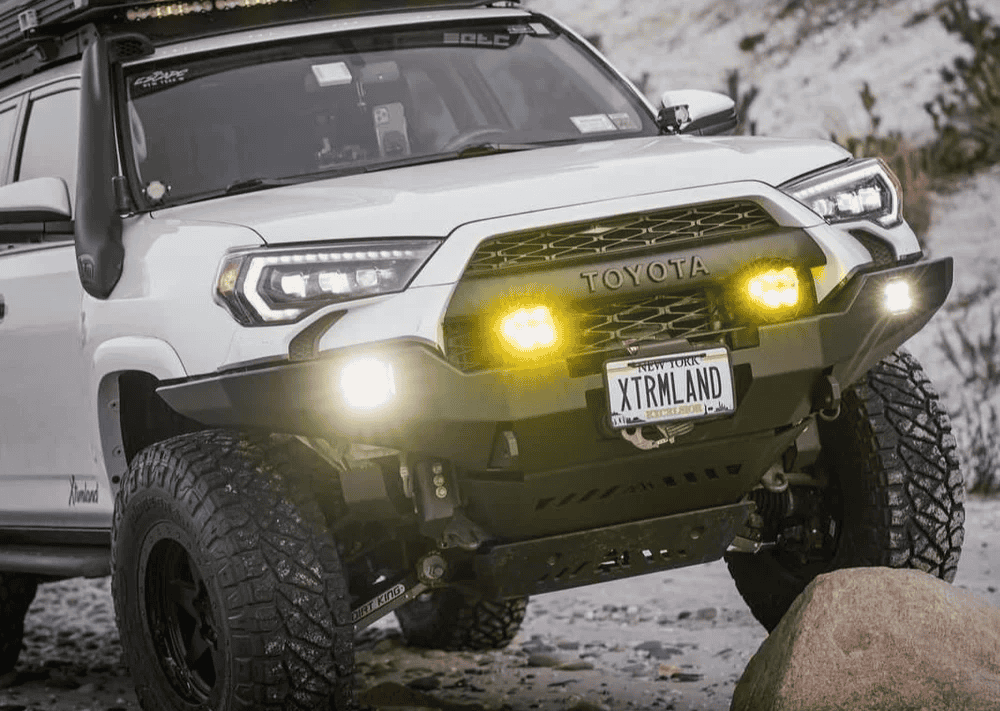Overland Vehicles

Vanlife and overland living both revolve around mobility, but the ground they cover is not the same. Vanlife typically follows highways, scenic byways, and Forest Service roads in good condition. Camps lean toward established sites, trailhead parking, or stealth friendly streets, with frequent access to groceries and service stations. Overland living chases the margins of the map, where washboards, water crossings, and rocky climbs shape pace and planning.
Mornings start with coffee, a short drive, and walks into town for supplies or workspace. Camps rotate between public lands and campgrounds. Power demands focus on refrigeration, laptops, induction cooking, and climate control for comfort through varied seasons.
Expect slower travel, more route research, and regular checks of fuel, water, and tire condition. Camps are often primitive and far apart. Navigation and weather windows carry more weight than cafe hours or gym showers.
If your trip map is mostly paved, vanlife fits. If the plan includes shelf roads, volcanic cinder, or muddy two tracks, overland living requires the right tires, clearance, and recovery plan. Hybrids exist, but the route should decide the build.
Your systems should serve your itinerary, not the other way around. Vanlife benefits from ergonomic layouts, efficient galley setups, and quiet insulation. Overland living shifts the budget toward suspension, protection, and spares that keep you rolling far from services.
Vanlife often runs larger battery banks with solar, shore charging at campgrounds, and inverters for cooking. Water tanks range from 10 to 30 gallons with easy refill access. Overland setups may split water into multiple jerry cans, add filtration at the source, and pair dual battery or DC to DC charging for reliability over rough miles.
Vans lean into modular cabinets, convertible beds, and indoor work zones for bad weather days. Overland rigs prize exterior storage, quick access to recovery tools, and weight balance. Both benefit from secure mounts that do not rattle free on long drives.
Overland living calls for traction boards, a proper jack, rated points, and knowledge of safe winch practice when applicable. Tire choice matters for both lifestyles, but aggressive all terrains and full size spares are essential for remote routes. Tire pressure management becomes part of your daily routine.
Costs vary as much as routes. The best plan starts with needs, then pares away anything that does not support your actual travel.
Vanlife budgets often highlight interior comforts, insulation, electrical capacity, and heating or cooling. Overland budgets skew toward suspension, armor, spare parts, and nav gear. Fuel economy can swing either way based on weight and tire selection.
Vanlife asks for basic maintenance, interior care, and electrical awareness. Overland living adds tire repair, fluid checks after rough sections, and an eye for trail etiquette to minimize impact. Both benefit from weather awareness and realistic turn around times.
Hot summers push ventilation and shade. Winters elevate heating and condensation control. For overland travel, spring runoff and fall storms can close routes overnight, so carry alternates and check conditions frequently.
If your map tilts toward desert tracks, alpine passes, and far flung camps, explore purpose built overland rigs. When your journey centers on long highway days and comfortable stays near trails and towns, a dialed van layout brings daily ease. For hybrid travel that mixes both, plan the route first, then select tires, suspension, and power that accommodate the roughest segment you intend to drive.
You bring the destinations and season. We translate that into vehicle capability, power strategy, and interior function with a focus on durability and clean wiring. For trail heavy travelers, our custom overland upfit approach matches suspension, armor, recovery points, and cabin essentials to your actual route plan. If comfort forward van travel is your style, we shape storage, sleeping, ventilation, and power so daily routines stay easy.
Choosing between vanlife and overland living is ultimately about the ground you want to cover and how self sufficient you want to be between towns. If you want help turning that vision into a reliable build, see our approach to why choose OZK Customs and start designing for your real world use. We build complete custom vans and trail ready rigs that balance comfort, capability, and smart power so your travel stays focused on the view, not the tools.
We design and install complete custom builds and partial upfits for adventure vans and overland vehicles. Our team plans electrical systems, storage, heating and cooling, suspension, protection, lighting, and communications around your routes and season. When you are ready to turn your plan into a dependable rig, visit our overland rigs page and share a few trip details so we can build the right solution.
Ready to match your travel style with the right build? Tell us how you explore, and our team will design a road proven van or trail capable overland rig that fits your routes, your season, and your must haves. Share a few details to start your custom plan today.
ADDRESS:
6159 E Huntsville Rd, Fayetteville, AR 72701
PHONE:
(479) 326-9200
EMAIL:
info@ozkvans.com